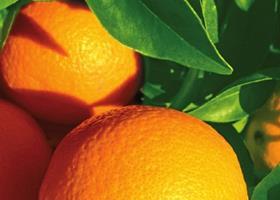
The 2016/17 California navel orange season officially got underway on 4 October with the Fukumoto variety picked in the southern San Joaquin Valley.
By historical standards, this was a fairly early start for the California deal. However, fruit maturity has been advanced for most crops across the western US this year, likely due to the lingering effects of the massive El Nino that produced a mild winter and warm spring.
First reports are that the California industry has an excellent quality crop of navels on its hands this year. Although the summer in the San Joaquin was typically hot, a lower incidence of insects at field level has resulted in relatively blemish-free rinds.
“Fruit cosmetics are looking quite good at this point because there’s been less thrip and red scale present in the orchards this year,” said Tom Wollenman, general manager at LoBue Citrus.
“Fruit quality is as good as I’ve ever seen for the first packouts,” Steve Holly of Voita West told Fruitnet. “We are just waiting for some cool nights now to bring on the colour.”
Last September, the USDA’s National Agricultural Statistics Service (USDA-NASS) forecasted an 84m carton (18 kg) crop for the 2016/17 season, with 96 per cent (81m cartons) shipped from the San Joaquin Valley. USDA-NASS also measured fruit diameter at 2.21inches (5.62 cm) or slightly below the five-year average of 2.25 inches (5.72cm). If the state receives substantial rainfall over the next several months, the navel crop will likely grow in size and increase the packout.
“The San Joaquin crop this year is around 10 per cent less in volume than last season, which is not necessarily a bad thing,” said Wollenman. “The reduction is probably due to growers keeping ‘summer navels’ (late varieties) on the trees into August, which makes that part of the deal lighter. Just how much fruit ends up getting packed this year depends on the amount of rain we get over the winter.”
California’s navel orange production has remained relatively stable over the last decade despite bearing acreage shrinking by 11 per cent from 135,000 acres to 120,000 acres estimated for the 2016/17 campaign. Growers have accomplished this by increasing the number of trees planted per acre, as well as replacing those orchards with declining production.
“In spite of less acreage than a decade or so ago and the impact of the current drought, last year’s 88m carton navel crop was arguably the largest in history for fruit on the tree,” says Wollenman.
Along with the prospect of prolonged drought, an even greater threat to the long-run viability of the California citrus industry has been the spread of the Asian Citrus Psyllid (ACP) across the state. First detected in 2008, ACP is a potential carrier of the Huanglongbing (HLB) bacteria that is lethal to all varieties of citrus. Florida was once the nation’s leading citrus-growing state but has seen its production drop by 70 per cent over the last decade largely due to HLB; Texas appears to be following a similar path.



